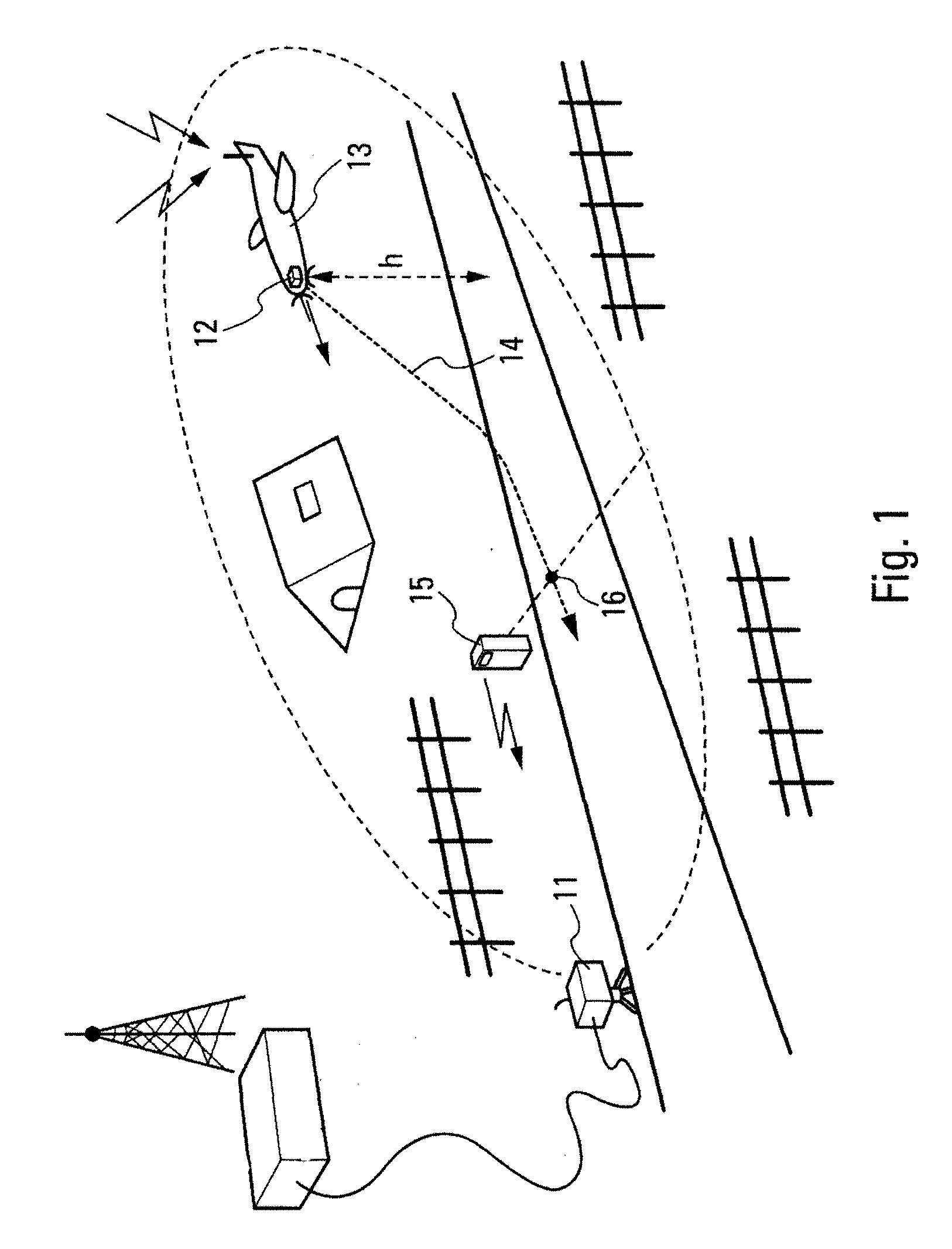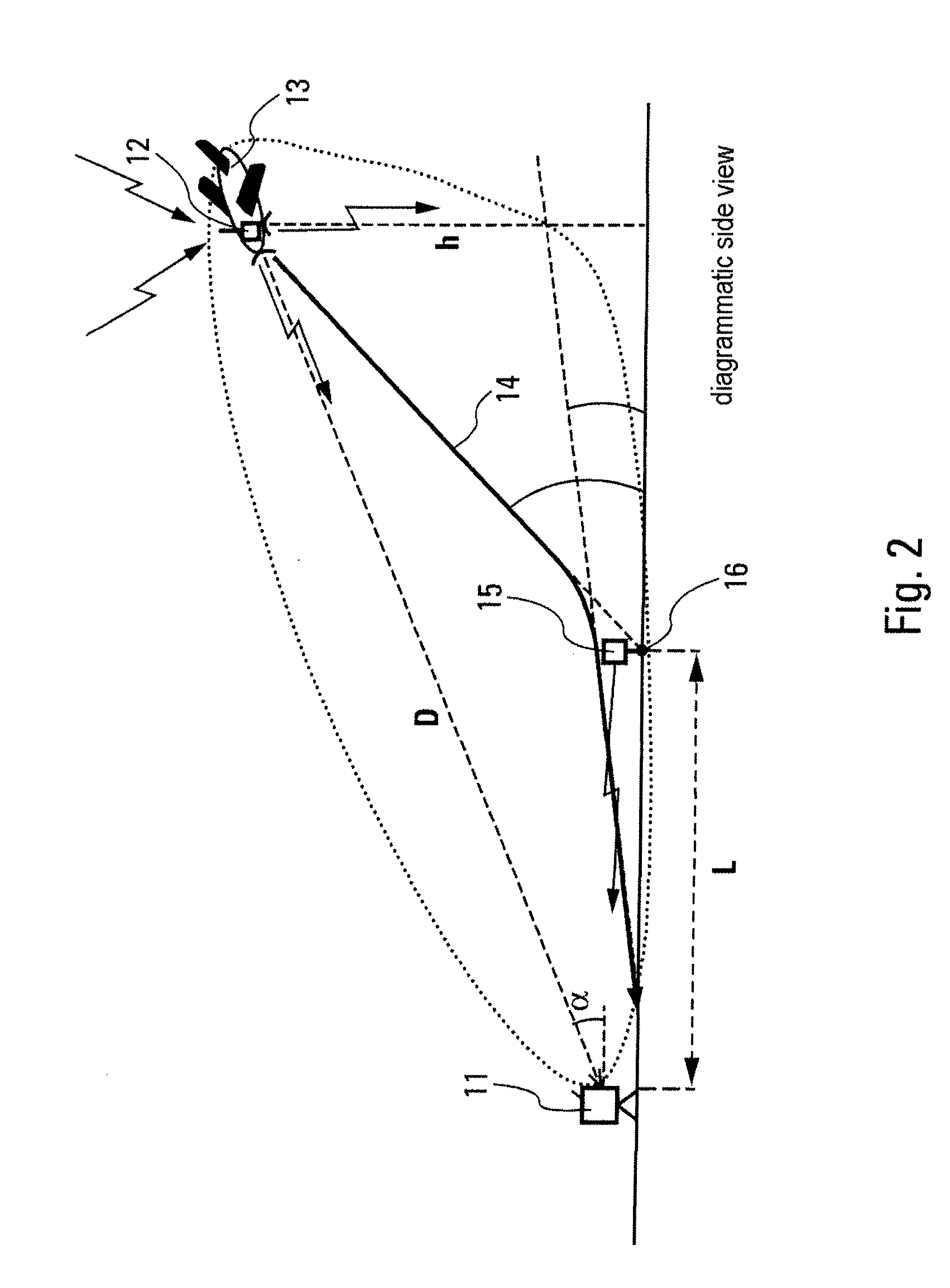Autonomous and automatic landing system for drones
a drone and automatic technology, applied in the field of aircraft, can solve the problems of unfavorable rapid deployment of systems on landing sites, inconvenient use and recovery of drones, and inability to provide gps service in high-accuracy mode, and achieves less cost, simple design, and greater geographic robustness.
- Summary
- Abstract
- Description
- Claims
- Application Information
AI Technical Summary
Benefits of technology
Problems solved by technology
Method used
Image
Examples
Embodiment Construction
[0027]Referring firstly to FIGS. 1 to 3, these illustrate, by means of views from different angles, the principle of operation of the system according to the invention.
[0028]To automatically guide an aircraft in the landing phase, the system according to the invention mainly comprises a detecting and locating device 11, located on the ground, and a multifunction beacon 12 on board the aircraft 13.
[0029]The main function of the detecting device 11 is to periodically measure the altitude h of the aircraft 13 and the radial distance D which separates the aircraft from the point on which it is located. It also measures the direction and altitude differences that exist between the direction connecting this device to the aircraft and a reference direction, preferably parallel to the axis of the runway on which the aircraft is to land. For this, it for example applies ecartometry measurements, known from elsewhere, enabling it to determine the azimuth and the elevation relative to the guid...
PUM
 Login to View More
Login to View More Abstract
Description
Claims
Application Information
 Login to View More
Login to View More - R&D
- Intellectual Property
- Life Sciences
- Materials
- Tech Scout
- Unparalleled Data Quality
- Higher Quality Content
- 60% Fewer Hallucinations
Browse by: Latest US Patents, China's latest patents, Technical Efficacy Thesaurus, Application Domain, Technology Topic, Popular Technical Reports.
© 2025 PatSnap. All rights reserved.Legal|Privacy policy|Modern Slavery Act Transparency Statement|Sitemap|About US| Contact US: help@patsnap.com



